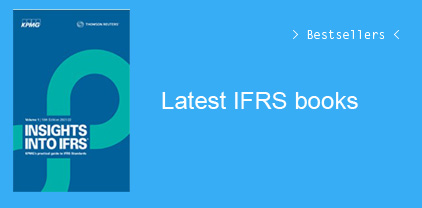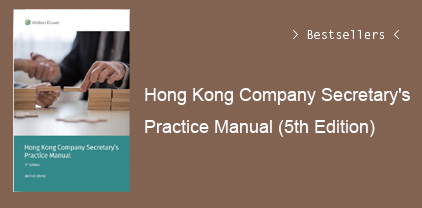FOREWORD
PREFACE
ACKNOWLEDGEMENTS
CHAPTER 1: Building a Data Sleuth Team
The First Team
The Forensic Accountant
Technical and Strategic
Thorough and Efficient
Detail Oriented and Effective Communication
Accounting Knowledge and Legal Knowledge
Meeting Deadlines and Developing Business
Forensic Accountant Problems
The Scalability Problem
The Strategy Problem
The Review Problem
The Sustainability Problem
Data Sleuth Solutions
The Scalability Solution
The Strategy Solution
The Review Solution
The Sustainability Solution
References
CHAPTER 2: The Data Sleuth Process
Engagement Types
The Case of the Reimbursing Controller
Data-Driven Results
Simultaneously Managing Client Expectations and Objectivity
The Case of the Mistaken Divorcee
Don't Be a Hired Gun
There is a Middle Ground
The Case of the Sentencing Hearing
Professional Standards
Professional Standards of Objectivity
Conflicts of Interest
Objectivity and Investigating Facts
The Data Sleuth Process
Client Onboarding
The Case of the Next Day Deposition
Risk-Based Analysis
Case Planning
Key Interviews
Open-Source Research
The Case of the Missing Inventory
Data Analysis
Other Data Sources and Evidence
Subject Interviews
Communication of Findings
CHAPTER 3: The Data Sleuth Necessity
Forensic Accounting Engagements versus External Financial Statement Audits
The Evolution of Forensic Accounting
The Case of the Cash Back Payroll Scheme
Start with the Evidence, Not the Scheme
The Case of the Gambling Executive Director
CHAPTER 4: Data Sleuth Considerations
Investigations Impact Real People
The Case of the Non-Existent Inventory
The Fraud Formula
Staying on Task with Purpose in Mind
The Investigation Decision Tree for a Data Sleuth
Ensure the allegations fall within the investigator’s expertise
Identify analysis and evidence required to verify allegations
Verify the legitimacy of the allegations
Investigate with client goals and possible recovery avenues in mind
Recovery Avenues
Recovery Avenue: Criminal Prosecution
Recovery Avenue: Civil Proceedings
Recovery Avenue: Insurance Reimbursement
The Case of the Man Cave
CHAPTER 5: Client Communication and Involvement
The Case of the Client’s Drama
Client Inquiry and Initial Meetings
Initial Client Meetings
Client Expectations
Data Procurement
Client Involvement During an Investigation
Client Feedback
The Case of the Overlooked Loss
Ongoing Client Communication
CHAPTER 6: The Data Sleuth Case Plan
The Data Sleuth Process
The Case of the Duplicate Payroll
The Client’s Investigation Priorities
Evaluate the Subject’s Access through Risk-Based Analysis
Data Sleuth Analysis Framework
Data Sleuth Analysis Framework Applications
Case Example: Estate Dispute
Case Example: Embezzlement
Case Example: Partnership Dispute
Case Example: Divorce
Case Example: Economic Damages
From Conceptual Venn Diagram to Comparative Data Analysis
The Data Analysis Plan
Investigation Priority Number 1
Investigation Priority Number 2
Investigation Priority Number 3
Data and Information Gathering
Communication of the Case Plan
The Case of the Duplicate Payroll – Conclusion
CHAPTER 7: Risk-Based Analysis
The Case of the Puzzling Entries
Focus on Cash
Money In
Money Out
Accounting Records and Interviews
The Benefits of Risk-Based Analysis
The Case of the Puzzling Entries - Conclusion
Risk Focus in Audits v. Risk Focus in Investigations
The Case of the Mom of the Year
Consideration of Risk in Fraud Investigations
Money In
Money Out
Case Findings 1
Altered Bank Statements
Investigation Findings
The Case of the Mom of the Year - Conclusion
Evaluating Risk in Divorce Cases and Estate and Trust Disputes
Divorce Cases
Estate and Trust Disputes
CHAPTER 8: Data Sources and Data Processing Techniques
Data Sources Explained
Quantitative and Qualitative Data Sources
Data Sources for Quantitative Evidence of Missing Money or Loss or Subject’s Benefit
Standard Data Sources
Standard Data Source: Bank Statements
Standard Data Source: Credit Card Statements
Standard Data Source: Payroll Reports
Non-Standard Data Sources
Non-Standard Data Source: System Exports
Non-Standard Data Source: Paper Conversion
Data Sources for Qualitative Evidence
Using Quantitative and Qualitative Data Sources
Data Processing Techniques
Relevant Period
Getting organized before beginning data processing
Considerations before Processing Data
Account Scheduling Steps
Formatting Account Schedules and Normalizing Payees
CHAPTER 9: Standard Data Sleuth Analyses: Comparative Analysis and Source and Use Summaries
Comparative Analysis
The Case of the Cash Flow Fiasco
Source and Use Summary and Analysis
Bank Account Source and Use Analysis
Sources (Deposits/Credits)
Uses (Expenditures/Debits)
How to Use the Bank Account Source and Use Summary Results
Credit Card Account Source and Use Summary
Sources (Payments/Credits)
Uses (Purchases/Advances/Balance Transfers/Other Charges)
How to Use the Credit Card Source and Use Summary Results
CHAPTER 10:Standard Data Sleuth Analyses: Interesting Data Findings, Risk Indicator Analysis, and Payroll Analysis
Interesting Data Findings
Standard IDF Data Analysis Tests
Benford’s Analysis
Even-Dollar Amounts
Large Individual Payments
Month-Over-Month Pivot Table
Extract Detailed Transactions from Source and Use Summaries
Using Accounting Records in the Interesting Data Findings Analysis
Create an Interesting Data Findings Summary
Risk Indicator Analysis
Risk Indicator Analysis Steps
Example for Using Risk Indicator Analysis
Payroll Analysis
Ghost Employees
Data Analysis Test: Number of Employees
Data Analysis Test: Duplicate Social Security Numbers
Data Analysis Test: Employee Records without Addresses
Data Analysis Test: Employee Records with Duplicate Addresses
Data Analysis Test: Total Risk Indicators and Comparing to Payroll Records
The Case of the Limited Payroll Records
Overpayments of Payroll
Data Analysis Test: Pay Date Review
Data Analysis Test: Even-Dollar Payments of Net Pay and Expense Reimbursements
Data Analysis Test: Days of the Week
Data Analysis Test: Large Individual Payments
Data Analysis Test: Number of Payments to Employees Per Month
Risk Indicator Analysis and Comparative Analysis
The Case of the Overpaid Administrator
CHAPTER 11: Findings, Reports and Testimony
Findings
Reports
AReport for Criminal Charges
Report Recommendations for Law Enforcement Referral
An Expert Report for Civil Litigation
An Expert Report for Insurance Reimbursement
Report Organization Recommendations
Testimony
CHAPTER 12:Practice the Data Sleuth Process
Review of the Data Sleuth Case Plan
Review of Data Sleuth Data Processing
Review of The Data Analysis Plan and Standard Data Sleuth Analyses
Case Study: The Case of the Disappearing Business
Case Study 1: Exercise 1
Case Study: The Case of the Sneaky CFO
Case Study 2: Exercise 1
Initial Client Meeting with Jack
Case Study 2: Exercise 2
Chapter 13:The Cases That Went Wrong
The Client Who Believes He was Wronged
The Case of the Inaccurate Insurance Claim
The Case of the Unreconciled Cash Drawer
The Client Whose Decisions Impact an Investigation
The Case of the Overworked Office Manager
The Office Manager
The Analysis
The Interview
The Client’s Decision
Chapter 14: Data Sleuth Expansion
Data Sleuth Empowers the Curious
Data Sleuth Divisions
Public Accounting Firms
Consulting and Advisory Firms
The Case of the Phony Professional
Law Firms
Law Enforcement
The Future of Data Sleuth
Data Sleuth as Prevention
Licenses, Credentials, and Professional Development
Appendix: Case Study Exercise Solution Recommendations
Case Study 1: Exercise 1 - Solution Recommendations
Case Study 2: Exercise 1 - Solution Recommendations
Case Study 2: Exercise 2 - Solution Recommendations
ABOUT THE AUTHOR
ABOUT THE WEBSITE
INDEX
































